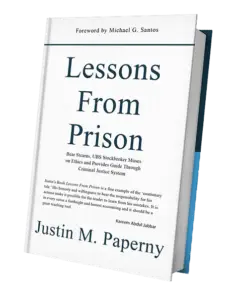Federal Sentencing Hearing
Not surprisingly, one of the first questions that my clients accused of criminal activity ask me is: What can I expect at my federal sentencing hearing? If my client is charged with a federal crime, it is necessary to determine to what extent the U.S. Sentencing Guidelines will apply. The answer is, while no longer mandatory, they are very important, and usually provide a clear barometer of what the ultimate sentence will be.
Background on The Sentencing Guidelines
In response to complaints that the sentences for federal crimes handed out varied considerably depending upon either the judge or the federal district in which the case was pending, Congress passed The Sentencing Reform Act of 1984, (the “Sentencing Reform Act”). The Sentencing Reform Act, in turn, created a Sentencing Commission which was responsible for creating a Sentencing Guidelines Manual (the “Guidelines Manual”).
The Guidelines Manual, which is updated annually, specifies sentences for almost all federal crimes using a point system. The point system issues points on the basis of the type of offense committed, the manner in which it was committed, and the offender’s criminal history. Under the point system, a sentencing guidelines range is calculated that generally covers six to nine month periods, with the lowest range 0 to 6 months, and the highest range the equivalent of life imprisonment.
As a result of the Sentencing Reform Act, the Sentencing Guidelines were mandatory. However, many in the legal community complained that the Guidelines were often too harsh and too rigid. Accordingly, in United States v. Booker (2005), the Supreme Court limited the reach of the Sentencing Guidelines. First, the Supreme Court held that the sentencing ranges specified in the Guidelines Manual are only advisory, not mandatory. Thus, federal judges now have discretion in determining sentences, and a federal appellate court can only overturn a trial judge’s sentence for abuse of discretion. (See Gall v. United States, Sup. Ct. 2007). Second, a judge cannot “enhance” a sentence unless either the offender has admitted to the facts giving rise to the enhancement, or a jury has determined that those facts have been established.
Has Booker Really Changed Things?
The Sentencing Commission issued a report in 2006, and that report concluded that, despite Booker, a majority of judges were still issuing sentences that conformed to the Guidelines Manual. I believe that the same is true today. Moreover, in the 2007 case of Rita v. United States, the Supreme Court held that sentences within the applicable Guidelines Range were presumed to be reasonable.
Significantly, the federal sentencing statute, 18 U.S.C. §3553(a), entitled “Factors To Be Considered in Imposing a Sentence,” requires that the court consider, among a number of other factors,[1] the Guidelines Range under the Guidelines Manual [§3553(a)(4)(A)(i)], as well as “any pertinent policy statement” issued under the Guidelines Manual. [§3553(a)(5)(A)]. Moreover, with limited exceptions, federal judges “shall impose a sentence of the kind, and within the range” determined by applying the Sentencing Guidelines. [18 U.S.C. §3553(b)(1)]. Indeed, the court, at the time of sentencing, must state why it imposed a particular sentence, and, if the sentence is within a Sentencing Guidelines range that exceeds 24 months, “the reason for imposing a sentence at a particular point within the range.” [18 U.S.C. §3553(c)(1)]. Finally, if the sentence imposed is “not of the kind, or is outside the range” of the Sentencing Guidelines, the court must explain the specific reasons why. [18 U.S.C. §3553(c)(2)].
So Where Are We At Concerning the Sentencing Guidelines, and What do We do About It?
With all due respect to Booker, the Sentencing Guidelines still effectively control in the majority of federal criminal cases. Thus, as a standard practice, I always do a preliminary Sentencing Guidelines analysis as soon as practical after being retained. Moreover, over time, as the evidence is reviewed and the facts of the case are established, I update my analysis. Finally, I always explain to my client what the Sentencing Guidelines are and how they will likely impact his or her sentence should a guilty plea or conviction following a trial occur.
The moral of the story is: “Beware of the Sentencing Guidelines.”
[1] These other factors include the following:
(1) the nature and circumstances of the offense and the history and characteristics of the defendant;
(2) the need for the sentence imposed-
(A) to reflect the seriousness of the offense, to promote respect for the law, and to provide just punishment for the offense;
(B) to afford adequate deterrence to criminal conduct;
(C) to protect the public from further crimes of the defendant; and
(D) to provide the defendant with needed educational or vocational training, medical care, or other correctional treatment in the most effective manner;
(3) the kinds of sentences available;



